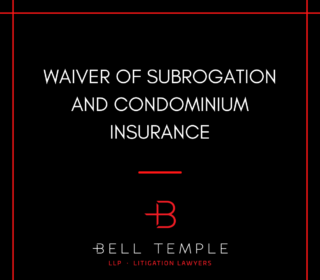In a decision released on January 2, 2020 by the Ontario License Appeal Tribunal (LAT), an adjudicator awarded the single largest award to date under section 10 of Regulation 664, a staggering 25 per cent as against Unica Insurance Company for attendant care benefits and home modifications upwards of 500 thousand dollars1.
A brief history of section 10
If the Licence Appeal Tribunal finds that an insurer has unreasonably withheld or delayed payments, they may award a lump sum of up to 50 per cent of the amount to which the person was entitled at the time of the award together with interest on all amounts then owing to the insured (including unpaid interest) at the rate of 2 per cent per month, compounded monthly, from the time the benefits first became payable under the Schedule2.
Though the adjudicator has the authority to award up to 50 per cent, the LAT does not take this power lightly. The test for this award is particularly onerous. An Applicant must establish that their insurance company unreasonably withheld, delayed payment or otherwise acted in an unreasonable manner, such as bad faith, to be entitled to an award. For example, the LAT has previously determined that failure to adjust a file in a timely manner3 and delays and denials of payment4 do not alone constitute conduct that should be sanctioned.
In an August 2017 decision, the LAT confirmed that an award under section 10 is in fact possible. Adjudicator Ernest H. Toomath awarded 30% of the claimant’s entitlement to income replacement benefits as against BelairDirect Insurance in the amount of $3,693.605. Unfortunately, no decision to date has shed light on the actual test to be met to be successful under section 10.
What exactly happened?
The Applicant was involved in an accident on March 6, 2014 in which he suffered a brain injury and multiple fractures. He claimed statutory accident benefits (SABs) from his insurance company, Unica Insurance Company. Significantly, Unica’s assessors determined the Applicant fell within the definition of catastrophic impairment due to his brain impairment, due to having a marked impairment in the sphere of adaptation, and due to having a combined 63% whole-person impairment as a combination of physical and mental-behavioural issues from the accident.
Unica denied the Applicant’s claim for benefits and the Applicant applied to the LAT for adjudication. Among other issues, the Applicant opined that he required $6,000 per month in attendant care benefits, $344, 864 for rehabilitation benefits in the form of home modifications and an award under section 10 on the basis that Unica unreasonably withheld or delayed payment. Unica felt that $1,199 per month in attendant care benefits was more reasonable and that the Applicant didn’t require the home modifications.
The LAT’s decision and rational
The Applicant was awarded the maximum $6,000 in monthly attendant care benefits in accordance with the Schedule6, less amounts already paid by Unica. The adjudicator opined that the Applicant “cannot ‘functionally exit the home’ on his own without additional assistance to safely overcome his physical pain and mobility limitations”7.
In awarding the rehabilitation benefits requested, the Tribunal found the installation of an in-home elevator and a therapy room would allow for access to areas of the home that the Applicant needs for ordinary living, and they have the purpose of eliminating the effects of his disability resulting from the accident8. When considering the assessments of both parties, the adjudicator determined that the Unica’s assessors did not spent enough time considering safety and security during their assessment.
Most significantly, with respect to an award under section 10, the Tribunal found that Unica had failed to ask the relevant questions about the Applicant’s functional needs and “should have asked its assessors to investigate whether [the Applicant] needed cuing, emotional support, and nighttime supervision”9. It was also unreasonable for the Respondent to focus on their expert reports when its own assessors had designated the Applicant to be catastrophically impaired. The adjudicator opined that Unica’s partial denials of the benefits were “imprudent, inflexible, and immoderate”10.
What does this mean in the Insurance world?
The test for section 10 is, for lack of a better word, unclear. Insurance companies have no method of protecting themselves against claims under section 10 because there is no real way of knowing what test the Applicant must establish. Section 10 provides a ‘green light’ for the LAT to entertain claims for special awards, with no real basis for award other than the blanket authority.
What this decision lacks in test, it makes up for in rational. The LAT determined that it was Unica’s,
- failure to ask relevant questions as to the Applicant’s functional needs following the receipt of a treatment plan; and
- reliance on a subsequent insurer examinations that did not correspond to information in the Applicant’s medical and treatment file, specifically a catastrophic determination from their own assessors that merited an award under section 10.
As a takeaway from poking through the mind of the LAT adjudicator in this decision, insurance companies should investigate further when in receipt of questionable treatment plans and read medical evidence in relation to the insured’s condition as a whole, most especially if the insured has been deemed catastrophically impaired. In an ideal world, no denial should be deemed “imprudent, inflexible, and immoderate”.
About the Author:
Danielle Tavernese is an articling student with Bell Temple LLP. She completed her undergraduate degree at the University of Toronto and her legal education at the University of Ottawa in the French Common Law program. She works closely within accident benefits and various tort litigation matters at the firm and has appeared before the Superior Court of Justice.







